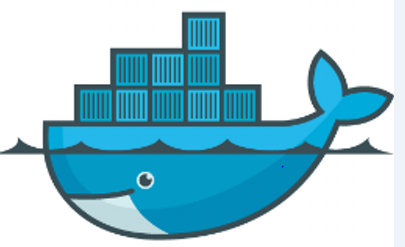In
our previous articles we have seen how we can use Ansible to perform basic
commands on a remote machine. In this article we will see playbooks. Playbooks
are a completely different way to use Ansible.
Playbooks
are nothing but configuration details that are defined in a text files which
tell us what actions needs to be done on the remote machines. For the Ansible
to execute on the remote machine we don’t need any additional software other
than Python. The tasks that need to be performed on a remote machine are
written inside a playbook in YAML format.
Now
lets create a Sample playbook for the article purpose. As a Scenario we can create
a playbook for executing a Echo command on the remote machine. In order to run a command on a remote machine
we can use
[root@vx111a
ansible]# ansible dev -m command -a "/bin/echo hello Sample"
172.16.202.96
| success | rc=0 >>
hello
Sample
The
‘dev’ is something that we configure in our inventory file with a list of IP
address. Now if we check the above command we had used the module command to
run a command on the remote machine. Now we will create a Sample Playbook for the same above command
using the YAML format.
Now
lets create a Ansible directory which we will use for our article. The next
main step is to tell Ansible about the remote machines that we need to talk.
For this we need to create a Ansible hosts file also called as inventory file.
This file contains list of Ip address that are defined in groups that we can use
them while running Ansible commands. By default the location of this file is
/etc/Ansible/hosts. This is a global file that we can use but Ansible lets you
create your hosts file and pass that to the Ansible command.
When
we run the Ansible command, the command will always check for the Ansible.cfg
file in the local directory that it is being run. If the file is found it will
override the global configuration with the local values.
Once
the directory is created, create a ansible.cfg file with the values as,
[root@vx111a ansible]# cat ansible.cfg
[root@vx111a ansible]# cat ansible.cfg
[defaults]
hostfile=hosts
We
have defined the hostfile configuration option with the value of the hosts, within
the defaults group.
Now
lets define the hosts file like this,
[root@vx111a
ansible]# cat hosts
[dev]
172.16.202.96
ansible_ssh_user=root
In
the host file we have defined a “dev” group with an IP address and the user
with which we need to login to that machine and perform actions on.
Now
once the configuration of the Ansible.cfg and hosts file is done ,we can test
our configuration using the basic command as,
[root@vx111a
ansible]# ansible -m ping 'dev'
172.16.202.96
| success >> {
"changed": false,
"ping": "pong"
}
It
was a Success, what we did was to ping the servers defined in the hosts file as
group “dev”. You can compare the IP in the above command output with the one in
the hosts file.
Now
we will define a play book for the same above command execution.
[root@vx111a
ansible]# cat sample-playbook.yml
---
-
hosts: dev
tasks:
- name: run echo Command
command: /bin/echo Hello Sample PlayBook
This
above is the sample play book that we need to write. The hosts: dev declaration is
at the top, which tells Ansible that we are using the dev hosts group. Next is
the list of the tasks. In the above example we have one task with the name “run
echo Command”. This is simply a description to allow users understand what the
task does. Finally the command:
/bin/echo Hello Sample PlayBook use the module command for running the
command /bin/echo with the arguments “Hello Sample PlayBook”.
Now
lets run the playbook as,
[root@vx111a
ansible]# ansible-playbook sample-playbook.yml
PLAY
[dev] ********************************************************************
GATHERING
FACTS ***************************************************************
ok:
[172.16.202.96]
TASK:
[run echo Command] ******************************************************
changed:
[172.16.202.96]
PLAY
RECAP ********************************************************************
172.16.202.96 : ok=2 changed=1
unreachable=0 failed=0
Once
the above playbook is completed, we can see the status as ok. The most
important thing to notice is that the playbook does not return the output of
the module.
Now
lets write another playbook example where will add some debug statements for
the output that is generated. For the same above playbook we add a register
[root@vx111a
ansible]# cat sample-playbook1.yml
---
- hosts: dev
tasks:
- name: Echo a Command
command: /bin/echo Hello
register: out
- debug: var="{{ out.stdout }}"
- debug: var="{{ out.stderr }}"
---
- hosts: dev
tasks:
- name: Echo a Command
command: /bin/echo Hello
register: out
- debug: var="{{ out.stdout }}"
- debug: var="{{ out.stderr }}"
In
the above playbook other than name and command we have a register field. We
have registered a variable by the name out for which we assigned the out.stdout
(output of the command). Now once we execute the play book using the Ansible we
can see something like this,
[root@vx111a
ansible]# ansible-playbook sample-playbook1.yml
PLAY [dev] ********************************************************************
GATHERING FACTS ***************************************************************
ok: [172.16.202.96]
TASK: [Echo a Command] ********************************************************
changed: [172.16.202.96]
TASK: [debug var="{{ out.stdout }}"] ******************************************
ok: [172.16.202.96] => {
"var": {
"Hello": "Hello"
}
}
TASK: [debug var="{{ out.stderr }}"] ******************************************
ok: [172.16.202.96] => {
"var": {
"": ""
}
}
PLAY RECAP ********************************************************************
172.16.202.96 : ok=4 changed=1 unreachable=0 failed=0
PLAY [dev] ********************************************************************
GATHERING FACTS ***************************************************************
ok: [172.16.202.96]
TASK: [Echo a Command] ********************************************************
changed: [172.16.202.96]
TASK: [debug var="{{ out.stdout }}"] ******************************************
ok: [172.16.202.96] => {
"var": {
"Hello": "Hello"
}
}
TASK: [debug var="{{ out.stderr }}"] ******************************************
ok: [172.16.202.96] => {
"var": {
"": ""
}
}
PLAY RECAP ********************************************************************
172.16.202.96 : ok=4 changed=1 unreachable=0 failed=0
We
can see the stdout as ”Hello”.
This
is the basic introduction of the playbooks in Ansible. Hope this helps. In the
next articles we will see advanced examples on Ansible playbooks







